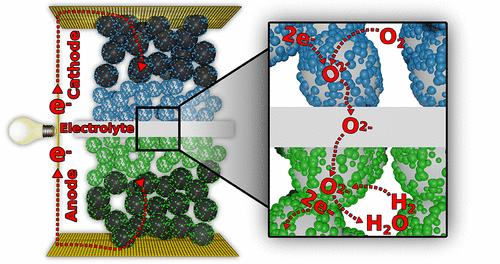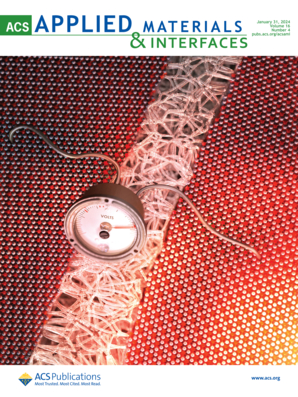Enhancing the Performance of Metal-Supported Solid Oxide Fuel Cells via Infiltration with an Aqueous Solution of Metal Nitrate Salts
IF 8.3
2区 材料科学
Q1 MATERIALS SCIENCE, MULTIDISCIPLINARY
引用次数: 0
Abstract
The infiltration technique is a cost-effective method to develop nanostructured electrodes that can accelerate sluggish oxygen reduction reaction (ORR) and enhance the electrochemical performance of solid oxide fuel cells (SOFCs) at intermediate temperatures (600–800 °C). For metal-supported SOFCs, identifying a highly efficient ORR catalyst is an ongoing challenge due to lower temperature operation. In this work, nanostructured praseodymium oxide (PrOx) and multiphase heterostructures containing perovskites with the nominal composition of Nd0.6Sr0.4CoO3−δ (NSC), SrCO3, and CoO have been developed via infiltration into the symmetric metal-supported backbone as binary layer composite, and their electrochemical performance has been investigated. The composite demonstrates enhanced electrochemical performance at various temperatures achieving the lowest polarization resistance (Rp) of 0.05 Ω cm2 at 700 °C compared to multiphase NSC alone (0.1 Ω cm2) under similar conditions. A distribution function of relaxation time (DFRT) analysis using impedance spectroscopy genetic program (ISGP) was carried out to study different electrochemical processes. PrOx significantly improves the processes involved in the ORR. The full cell performance of the composite electrode achieves a peak power density (PPD) of 329 mW·cm–2 at 700 °C in 3%H2O/H2 as fuel.

求助全文
约1分钟内获得全文
求助全文
来源期刊

ACS Applied Materials & Interfaces
工程技术-材料科学:综合
CiteScore
16.00
自引率
6.30%
发文量
4978
审稿时长
1.8 months
期刊介绍:
ACS Applied Materials & Interfaces is a leading interdisciplinary journal that brings together chemists, engineers, physicists, and biologists to explore the development and utilization of newly-discovered materials and interfacial processes for specific applications. Our journal has experienced remarkable growth since its establishment in 2009, both in terms of the number of articles published and the impact of the research showcased. We are proud to foster a truly global community, with the majority of published articles originating from outside the United States, reflecting the rapid growth of applied research worldwide.
 求助内容:
求助内容: 应助结果提醒方式:
应助结果提醒方式:


